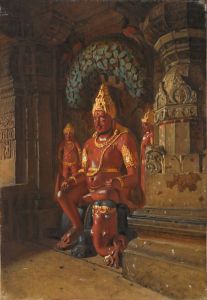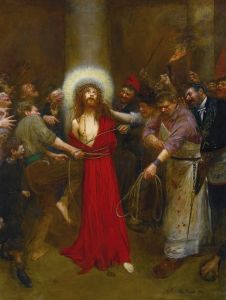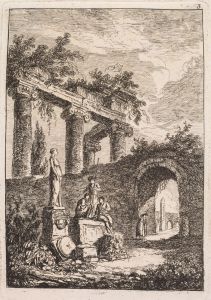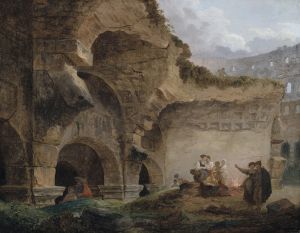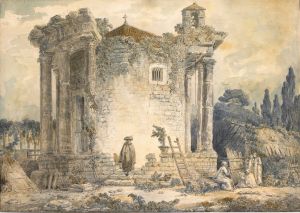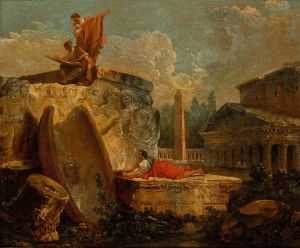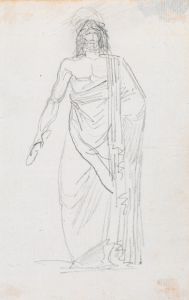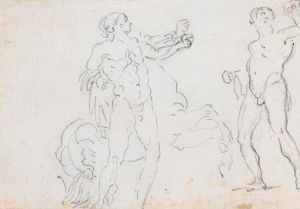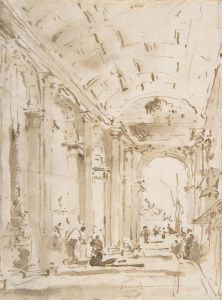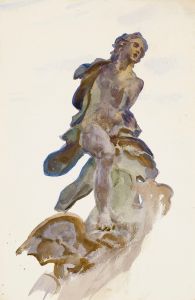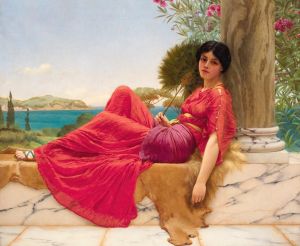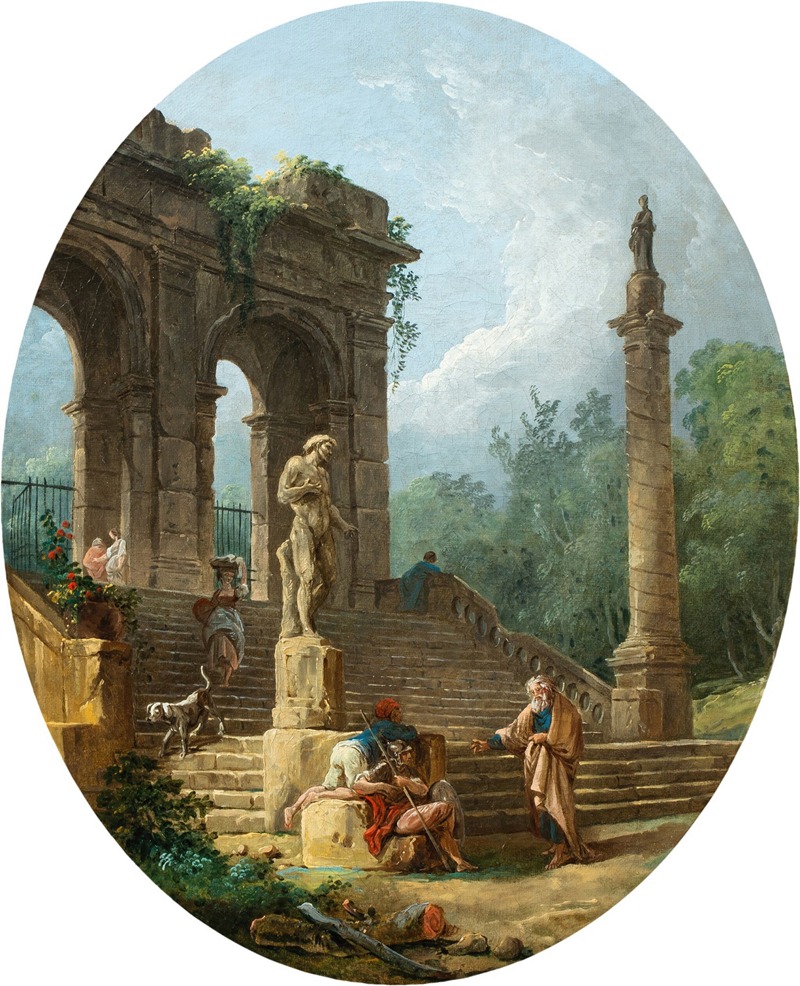
A capriccio of a classical arcade and a column with figures conversing before a statue
A hand-painted replica of Hubert Robert’s masterpiece A capriccio of a classical arcade and a column with figures conversing before a statue, meticulously crafted by professional artists to capture the true essence of the original. Each piece is created with museum-quality canvas and rare mineral pigments, carefully painted by experienced artists with delicate brushstrokes and rich, layered colors to perfectly recreate the texture of the original artwork. Unlike machine-printed reproductions, this hand-painted version brings the painting to life, infused with the artist’s emotions and skill in every stroke. Whether for personal collection or home decoration, it instantly elevates the artistic atmosphere of any space.
Hubert Robert, a prominent French painter of the 18th century, is renowned for his captivating landscapes and architectural fantasies. One of his notable works, "A Capriccio of a Classical Arcade and a Column with Figures Conversing before a Statue," exemplifies his skill in blending real and imagined elements to create evocative scenes that capture the viewer's imagination.
Born in Paris in 1733, Robert was deeply influenced by his time in Italy, where he studied from 1754 to 1765. His exposure to the ruins of ancient Rome and the vibrant artistic community in Italy profoundly shaped his artistic vision. Robert became known for his "capricci," a term used to describe paintings that combine architectural elements in imaginative ways, often incorporating ruins and classical motifs.
"A Capriccio of a Classical Arcade and a Column with Figures Conversing before a Statue" is a quintessential example of Robert's capriccio style. The painting features an imagined architectural setting, where a classical arcade and a solitary column serve as the focal points. These elements are rendered with meticulous attention to detail, showcasing Robert's deep appreciation for classical architecture and his ability to bring it to life on canvas.
In the foreground, a group of figures is depicted engaging in conversation. Their presence adds a narrative element to the scene, inviting viewers to ponder the nature of their discussion and their relationship to the surrounding architecture. The figures are dressed in attire reminiscent of the 18th century, providing a temporal contrast to the ancient architectural elements that dominate the composition.
The statue, positioned prominently within the scene, serves as a silent witness to the unfolding interaction. Its classical form and serene demeanor contribute to the painting's overall atmosphere of timelessness and contemplation. The juxtaposition of human activity against the backdrop of enduring architectural forms is a recurring theme in Robert's work, reflecting his fascination with the passage of time and the enduring legacy of classical antiquity.
Robert's use of light and shadow further enhances the painting's dramatic effect. The interplay of light across the architectural surfaces creates a sense of depth and dimension, drawing the viewer's eye into the scene. The careful modulation of light also highlights the textures of the stone and the delicate features of the figures, underscoring Robert's technical prowess.
Throughout his career, Hubert Robert earned the moniker "Robert des Ruines" due to his penchant for depicting ruins and his ability to evoke a sense of nostalgia and romanticism through his work. His paintings often explore themes of decay and renewal, capturing the beauty of ruins as symbols of both the past's grandeur and its inevitable decline.
"A Capriccio of a Classical Arcade and a Column with Figures Conversing before a Statue" is a testament to Robert's mastery of the capriccio genre and his ability to transport viewers to a world where history and imagination converge. Through his art, Robert invites us to reflect on the enduring allure of classical architecture and the stories that unfold within its shadow.





